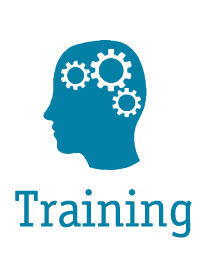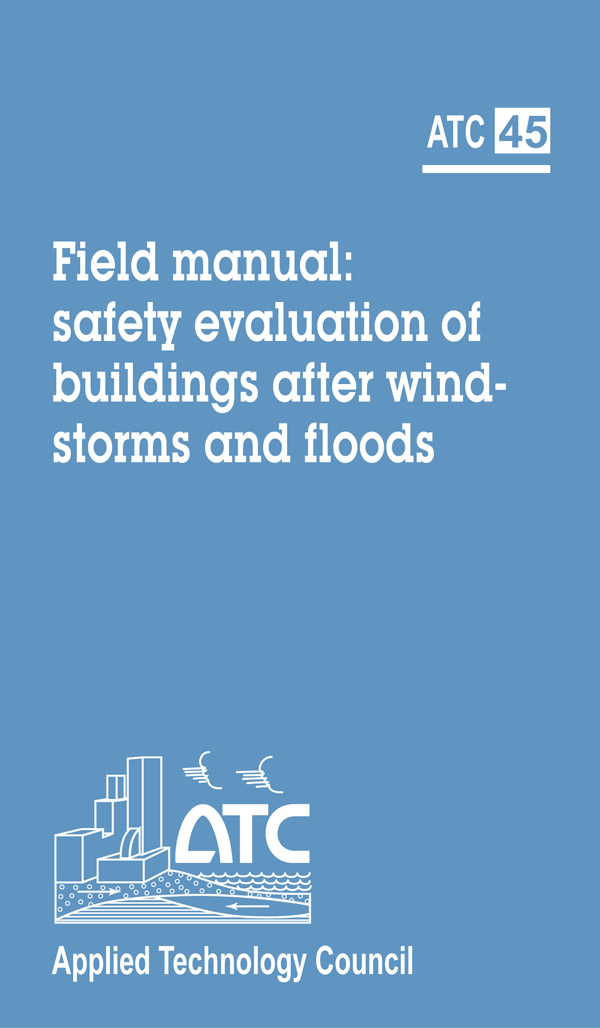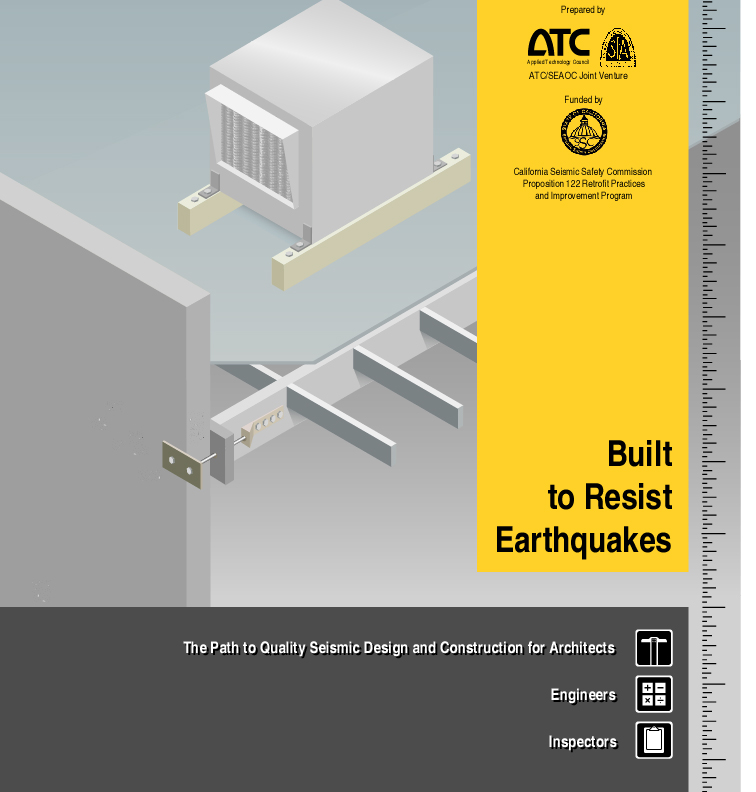The Applied Technology Council (ATC) is pleased to announce the immediate availability of the ATC-45 Field Manual: Safety Evaluation of Buildings after Windstorms and Floods. Funded by the Applied Technology Council, the ATC Endowment Fund, and the Institute for Business and Home Safety, this 132-page report provides guidelines and procedures for conducting postwindstorm and postflood building safety evaluations. The purpose of these evaluations is to determine whether damaged or potentially damaged buildings are safe for use, or if entry should be restricted or prohibited.
The ATC-45 Field Manual is intended to be used by building officials, building inspectors, engineers, and others involved in postdisaster safety evaluation of building types commonly found in the United States. The Field Manual explains three different building safety evaluation procedures. Two of the procedures (Rapid Evaluation and Detailed Evaluation) are discussed in detail. For each of these procedures, the document provides guidance on where to look for damage.
The Field Manual gives advice on evaluating structural, geotechnical, and nonstructural risks, and advice on how to rate the safety significance of certain types of damage. In addition, the Manual covers related topics of interest to safety personnel, including (a) how to deal with owners and occupants of damaged buildings; and (b) field safety issues. Evaluation forms and posting placards, represented in the document in small-scale size, can be downloaded free of charge below.
The Field Manual is patterned after the concepts developed in two earlier ATC projects: (1) the ATC-20 project, whereby ATC developed the well-known and widely used ATC-20 report, Procedures for Postearthquake Safety Evaluation of Buildings; companion ATC-20-1 Field Manual, and ATC-20-2 Addendum, which contains updated evaluation forms and placards; and (2) the ATC-26 project, whereby ATC developed several sets of procedures for postdisaster safety evaluation of U. S. Postal Service (USPS) facilities, including procedures for safety evaluation of USPS facilities after windstorms and floods.
The ATC-45 Field Manual has been printed in an easy-to-use, pocket-sized format. The document can be obtained from the Applied Technology Council, 201 Redwood Shores Parkway, Suite 240, Redwood City, California 94065 (phone, 650/595-1542; fax, 650/593-2320; e-mail, This email address is being protected from spambots. You need JavaScript enabled to view it.). Price: $27.00 per copy (plus shipping and sales tax). [ATC-45 is not available in electronic/PDF format.]
ATC-45 may also be ordered in the Applied Technology Council Online Store.






 Built to Resist Earthquakes, a training curriculum to improve the quality of the seismic design and construction of buildings, has been developed to serve as a resource for continuing education of architects, engineers, building officials and inspectors. Bound in a three-ring notebook, the curriculum consists of several hundred pages of training materials pertaining to the seismic design and retrofit of (1) wood-frame buildings, (2) concrete and masonry construction, and (3) nonstructural components. The curriculum was published in 1999 by the joint venture partnership of the Applied Technology Council (ATC) and the Structural Engineers Association of California (SEAOC).
Built to Resist Earthquakes, a training curriculum to improve the quality of the seismic design and construction of buildings, has been developed to serve as a resource for continuing education of architects, engineers, building officials and inspectors. Bound in a three-ring notebook, the curriculum consists of several hundred pages of training materials pertaining to the seismic design and retrofit of (1) wood-frame buildings, (2) concrete and masonry construction, and (3) nonstructural components. The curriculum was published in 1999 by the joint venture partnership of the Applied Technology Council (ATC) and the Structural Engineers Association of California (SEAOC).